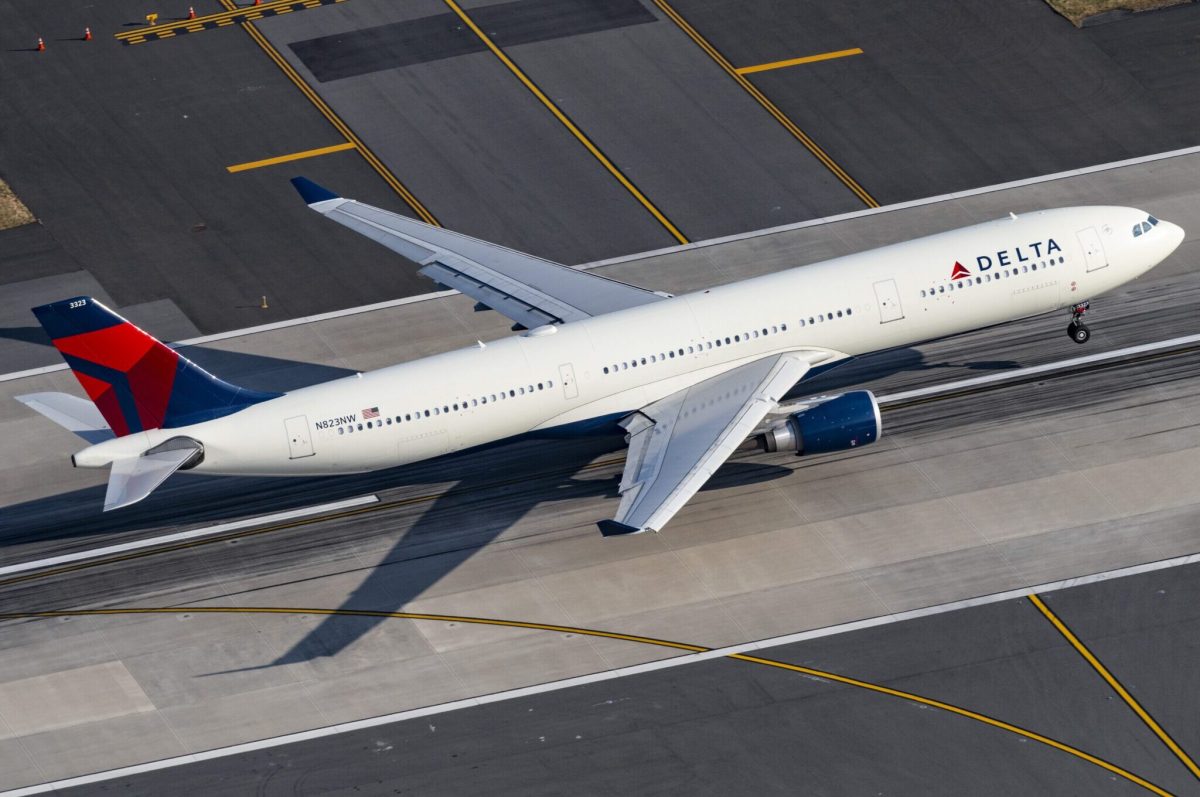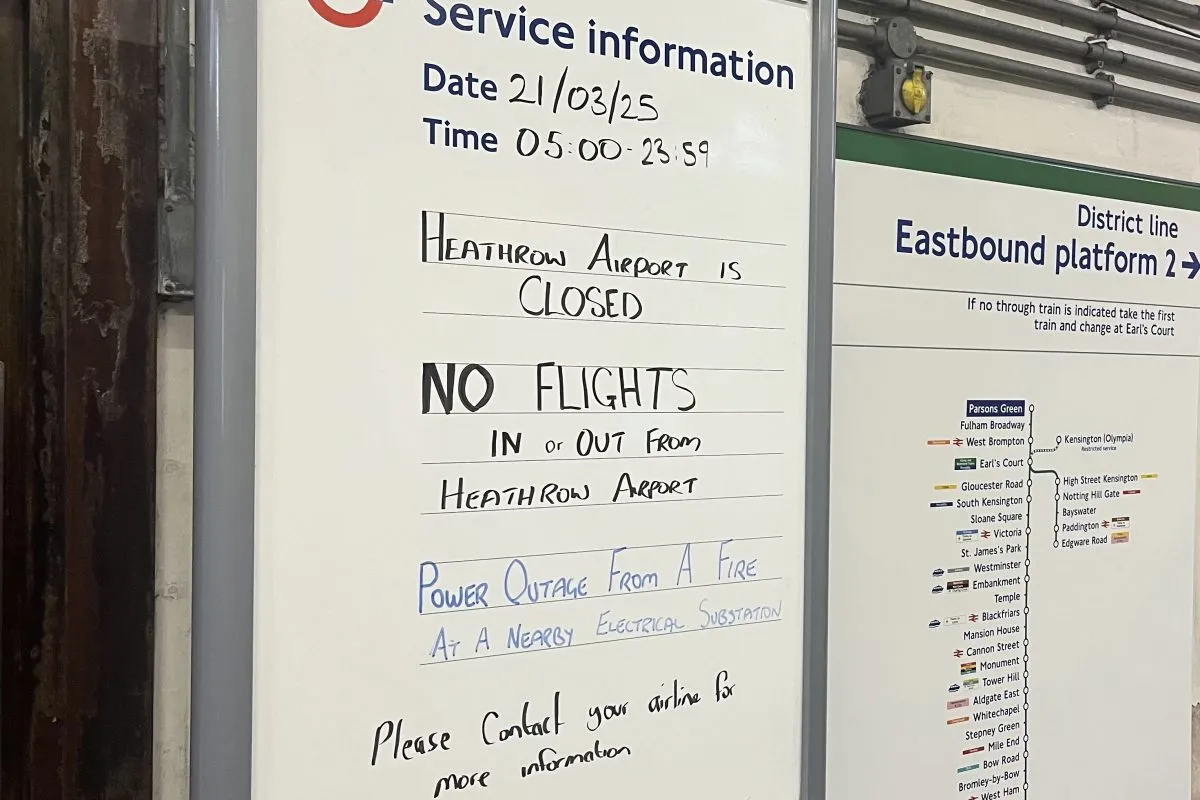Tourism Under Trump Year 1 Adversely Impacted the U.S. Brand
Skift Take
As United States President Donald Trump's first year in office ends later this month, there's no question that the president already left his mark on the global travel industry regardless of your political leanings.
Trump took office on January 20, 2017, and by many measures, inherited a healthy and vibrant U.S. travel industry from former President Barack Obama.
Since January 2017, Trump issued multiple travel bans, which faced legal challenges; international arrivals to the U.S. have dropped; the White House reintroduced Cuba travel restrictions, and hurricanes ravaged parts of the Caribbean, including U.S. territory Puerto Rico, which still has about half of the population without electricity, and the Gulf Coast.
The president's first 100 days in office, a benchmark for assessing a president's initial performance in terms of keeping campaign promises and making legislative achievements, set the tone for the rest of the year. By the time Trump's first 100 days ended on April 29, Skift's editorial team had already reported on hospitality CEOs' concerns; some U.S. airlines' high hopes; booking site CEOs' activist roles, mostly in opposition to Trump, and tourism board worries that they wouldn't meet their international visitation goals in 2017.
Many U.S. airline and hotel CEOs, however, have praised the U.S. tax bill's passage on December 22 – the Trump Administration's signature legislative achievement in 2017. Travel executives such as Best Western CEO David Kong, Delta Air Lines CFO Paul Jacobson, and Priceline Group CEO Glenn Fogel, for instance, have said tax reform will directly benefit their companies and shareholders.
But while much of corporate America is celebrating the new year with tax cuts in sight, other companies and organizations are anxious about White House executive orders or Congressional legislation to come. Many international travelers are likely wondering if they'll encounter trouble at U.S. Customs checkpoints.
Still, Trump brought attention to an important travel industry agenda item during his first year in office – a much-needed, massive transportation infrastructure investment bill. But infrastructure bills tend to get drowned out when the president continues to trumpet ideas such as a border wall with Mexico.
Following is a look back at the Trump Administration's actions in 2017 that impacted various travel industry sectors and what to watch in each of these areas in 2018.
First Stop: Travel Ban 1.0
The president's first travel ban went into effect on January 27, 2017 and barred arrivals from seven Muslim-majority countries throughout the Middle East. Two other versions of the travel ban followed throughout the year as each version was challenged in U.S. federal courts.
The travel ban eventually made it to the U.S. Supreme Court, which allowed an amended version to go into effect, but the ban continues to face legal challenges.
The first ban led to demonstrations and chaos at major U.S. airports and led some travel industry executives to speak out in opposition. Marriott CEO Arne Sorenson said the travel ban was helping to prevent international meetings attendees from coming to the U.S. An additional array of meetings planners and companies also pledged to avoid the U.S. while the ban is in place.
Expedia also trolled Trump on Inauguration Day in January, in anticipation of the president's travel ban and rhetoric about building a border wall with Mexico. And a survey in March from the Association of Corporate Travel Executives found that 45 percent of respondents said a travel ban will pose travel difficulties for their companies.
Many U.S. employers remained concerned about the ban and worry that it could be extended to include larger markets of more significance to U.S. tourism and business travel.
A Trump Slump Takes Shape
International tourism arrivals are down four percent through July 2017, the most recent month for which data are available from the U.S. Department of Commerce. A decline had started in late 2016 and extended into 2017, and data from the peak summer travel season of June to August has started to trickle in.
That data show summer 2017 wasn't a banner season. Overseas arrivals for June were down 7.6 percent year-over-year and decreased 9.3 percent for July while Mexican arrivals were off 16.1 percent in June and fell 3.4 percent in July. Canadian arrivals, however, bucked the trend and, except for May, grew each month and are up 4.6 percent year-to-date through July.
U.S. Travel Association CEO Roger Dow said that the U.S. economy loses $2.5 billion for each point decrease in international arrivals. "So if we’re down four points, that’s a $10 billion loss in revenue that we didn’t have in the U.S. that we could have and should have had," said Dow, during a podcast episode in December for "No Vacancy with Glenn Haussman."
NYC & Company, New York City's tourism board, said in February that it projected 300,000 fewer international travelers would visit the city in 2017 due in part to the president's xenophobic rhetoric, travel ban and hard-line stance on immigration.
Some U.S. cities, including New York City, launched overseas marketing campaigns in direct response to the president's unwelcoming message towards foreigners. In April, Discover Los Angeles launched its "Everyone is Welcome" global campaign after it did some calculations and found that international arrivals wouldn't grow as staunchly in 2017 compared to past years in part because of the president's controversial rhetoric.
U.S. Secretary of Commerce Wilbur Ross spoke at U.S. Travel's IPW conference in Washington, D.C. in June in an attempt to reassure the travel industry about the Trump Administration's support. But since then, the administration hasn't done much to help promote international travel to the U.S.
Other destinations, travel industry organizations, and airlines, for example, insisted that there wasn't any evidence of a Trump Slump – yet. That all changed when U.S. Travel released revised international arrivals data in September that showed a “substantially more pessimistic assessment” of travel to the U.S., warning of “major storm clouds for the inbound international travel market," according to the organization. International visitation actually contracted in four of the first seven months of the year, and that included losses from some of the most important international markets for U.S. destinations.
Dow said that the decline in international travelers likely has less to do with who's in the Oval Office and more to do with the economy. “We’ve done a lot of research even before Trump was president and we know that people who travel are able to separate politics and place," said Dow.
"If you’re coming from Europe, Asia or Mexico to the U.S. it’s costing you a lot more to stay and shop," said Dow. "Weaker economies around the world such as in Latin America with Brazil and Argentina have been having a particularly tough time."
Increase in airline capacities around the world is also a factor in why fewer international travelers aren't coming, said Dow. "In Europe and Asia there’s an explosion of new aircraft being bought by carriers such as Ryanair, Wow Air, Turkish Air and the Middle East carriers and they’re all growing phenomenally," he said. "To meet their demands and needs with all this increased capacity, they’re offering some spectacular fares to go around Europe and Asia and we don’t even see that in the U.S."
The U.S., despite being expensive in major markets on the east and west coasts, for example, still has bargains to offer, said Dow. "I think the industry has to do a better job at talking about the bargain destinations in their area."
International arrivals data for August through December haven't been released, but many signs point to a continued slump in arrivals – due to Trump or otherwise – through the end of 2017 and into 2018.
Trump's First Budget Had Bad News For Tourism
The White House released the president's first budget for fiscal 2018 in March and it contained a few cuts aimed squarely at the travel industry. Some of the funding for the Transportation Security Administration (TSA), Amtrak and air traffic control would be re-allocated to building Trump's border wall with Mexico.
Brand USA, the organization that markets U.S. destination to international travelers, was also on the chopping block. The organization remained confident that it would be around in 2018 to keep marketing the U.S. and as of the end of December it's escaped the line of fire and will remain funded.
If Trump's first budget was a reminder of anything, it's that travel industry agenda items are often the first proposed funding cuts when money gets tight.
Laptop Ban Cleared For Take-Off
On March 25, the Trump Administration barred travelers flying from eight Middle East airports from carrying their laptops onboard aircrafts. Instead, laptops would have to be checked and couldn't be accessed during a flight.
The ban was largely seen as an attempt by the Trump Administration to directly harm carriers such as Emirates, Etihad and Qatar Air that compete with U.S. carriers on long-haul international travel. Many airlines feared that U.S. bound flights from the UK would also be added to the list, but that didn't materialize.
By July, the laptop ban was lifted for most carriers and was another sign of what the new White House Administration was capable of doing on behalf of an ally in the Middle East.
Open Skies
A group of U.S. airline CEOs, including Ed Bastian from Delta Air Lines and Oscar Munoz from United Airlines, met with President Trump at the White House on February 9. Air traffic control problems, delays, excessive regulations, and foreign competition were all subjects of conversation in the meeting.
The CEOs emerged from the meeting and seemed pleased with discussions. A week before the meeting, Etihad Airways vowed not to add more U.S. flights in a potential nod to Trump.
In July, a U.S. airline advocacy group launched a cable TV ad in support of Open Skies agreements. And in December, the Trump Administration announced it's planned talks with Qatar and the U.A.E. to discuss Open Skies. As Skift's Aviation Business Editor Brian Sumers wrote, Trump seems unlikely to take as tough a stance on the Gulf Carriers as the Obama Administration but the White House will try to push for more transparency.
Jobs Growth Starts Strong
U.S. Bureau of Labor Statistics data showed that tourism and hospitality employment, such as flight attendants, hotel front desk staff and museum and attractions staff, grew by 128,000 jobs year-over-year from January to April 2017. That four-month period coincided with the president's first 100 days in office and was an early benchmark for how the travel industry's hiring managers were responding to the new administration.
Although the U.S. travel industry added nearly 20 percent fewer jobs during the first four months of 2017 than the 158,700 hires made from January 2016 to April 2016, much of the weaker growth was from travel agencies and restaurants. The latter is included in leisure and hospitality jobs data although much of the restaurant business doesn’t come from tourism.
Travel industry organizations such as the World Travel & Tourism Council (WTTC) later advocated that the Trump Administration should make travel and tourism jobs growth a priority. WTTC data show that U.S. travel jobs growth lags behind other robust tourism economies.
As of December 31, the most recent month for which jobs data are available, the U.S. travel industry employed about 309,000 fewer people than it did on December 31, 2016 (15.7 million versus 15.3 million, respectively).
Trump Hotels Announced a New Brand
In June, Trump Hotels announced that it would be adding a new brand called American Idea. The company said the new brand would be marketed as a three-star, midscale brand that’s budget-friendly. At the time of the announcement, the brand had three signed agreements, all for properties to be located in the Mississippi Delta area of the U.S.
Other Trump brands, however, didn't have much good news to report during 2017. Plans for Trump Hotels' first Scion Hotel in Dallas were shelved after a Dallas developer said he was no longer interested in working with the Trump Organization on the project. The Trump SoHo Hotel in New York City said in November that it's severing ties with the Trump Organization and removing the Trump name from the property, noting that it was struggling to attract business. The Trump International Hotel in Panama is another example of a property that wants Trump's name removed.
The Trump International Hotel in Washington, D.C. is perhaps one of the company's only bright spots. Lobbyists and foreign diplomats with business in the capital have helped the hotel notch substantial profits since it opened in October 2016.
In an interview with Skift in January 2017, Trump Hotels CEO Eric Danziger said that that the company wouldn't pursue any international deals while President Trump was in office and instead will focus on domestic growth. But the company's domestic ambitions are also being met by ethical concerns.
Cuba Individual P2P Visas Were Eliminated
News broke in June that the Trump Administration was changing its Cuba policy and ending individual people-to-people travel to Cuba for U.S. citizens, which had been legalized in 2016 under the Obama Administration. This wasn't the worst-case scenario that many had feared for good reason – U.S. airlines and cruise lines could have lost $3.5 billion if Trump reversed all Obama-era policies and banned all U.S. travel to Cuba.
The U.S. Department of State also released a list of hotels that U.S. travelers will be barred from as part of the policy change, the notable exception being the Four Points by Sheraton in Havana, which is owned by Marriott International. Marriott remains the sole U.S. hotel operator in Cuba.
Marriott International CEO Arne Sorenson said in June that Cuba isn't material to Marriott's business but acknowledged that Americans want to go there. AccorHotels CEO Sebastien Bazin and Hyatt Hotels CEO Mark Hoplamazian echoed Sorenson, and Hoplamazian has said Hyatt is in active discussions to open properties in the country.
Many tour operators, despite being better-positioned from the policy change, criticized Trump's Cuba policy stance and soon after the announcement, Cuban bed and breakfast owners said they were getting cancellations.
To add to the drama, the U.S. Department of State issued a Cuba travel warning in September in response to alleged sonic attacks at the U.S. Embassy and hotels in Havana. The travel warning came a little more than a month before Trump's changes took effect on November 9.
Trump's decision aside, Cuba has also been a mixed bag for cruise lines and airlines. Norwegian Cruise Line maintained throughout last year that Cuba demand was strong while Royal Caribbean and Carnival, for example, have said Cuba is still an insignificant part of their businesses and the country's infrastructure make the destination challenging.
Spirit Airlines, Silver Airways, Frontier Airlines, and Alaska Airlines also announced they were cutting Cuba flights last year after demand wasn't as strong as initially projected. JetBlue and American Airlines have increased their U.S.-Cuba capacity, though the latter previously said it was cutting Cuba capacity in January 2017.
The president's decision to change U.S. policy on Cuba largely stems from a campaign promise to a small supporter base of Cuban expats in Miami. Americans can still go to Cuba, albeit with a tour group, but any demand that travelers had for individual travel has been put on hold because of the changes.
Puerto Rico's Ongoing Humanitarian Crisis
A U.S. territory a little more than 600 miles to the southeast of Cuba – Puerto Rico – also felt a backlash from Trump last year.
But in Puerto Rico's case, it involved more than 80 percent of the population being without electricity in the weeks after Hurricane Maria tore through the island in September and an unofficial death toll that could be more than 1,000, according to a New York Times analysis. The U.S. Virgin Islands was also hit hard by Hurricanes Irma and Maria and are still recovering.
Texas and Florida were also hit by hurricanes last year but the federal government's response to those scenarios was much quicker and more effective.
After Maria passed Puerto Rico, Trump made a series of tweets about the territory which in part criticized its financial crisis and questioned how long Federal Emergency Management Agency (FEMA) personnel and resources could stay in the territory. But Puerto Rico's tourism leader remained confident in relief efforts and saw the hurricane as an opportunity to revamp the destination.
The federal government treated Puerto Rico's recovery much differently than it handled that of destinations on the U.S. mainland, and some critics have compared Trump's handling of Puerto to President George W. Bush's response to Hurricane Katrina in New Orleans and the Gulf Coast in 2005. Many destinations are probably wondering, "will Trump have our backs if disaster strikes?"
National Parks and Monuments in Jeopardy
A group of U.S. National Monuments came under threat last year after Trump signed an executive order in April initiating a review of more than two dozen National Monuments. National Monuments in New Mexico and Utah were part of the review and in December Trump announced his intentions to shrink two Utah monuments. Decisions on the other 25 monuments under review are still outstanding.
U.S. Secretary of the Interior Ryan Zinke said in August that he won't recommend to Trump that any National Monuments be eliminated but will press the president to change some boundaries and possibly ease certain environmental restrictions at some monuments. Meanwhile, problems persist at some popular U.S. National Parks, including overtourism, lengthy maintenance backlogs, and a proposed entrance fee hike.
It's true that the entire national park system was facing massive mismanagement problems for decades before Trump entered the political arena. What's less clear is whether this administration will do anything to curtail the maintenance backlog and get the ship back on course. Our prediction? Don't hold your breath.
Visa Programs in Limbo
A tweet on May 2 showed a photo of then-Trump strategist Steven Bannon posing in front of a whiteboard that listed some of the administration's agenda items, and some of them weren't pretty for the travel industry.
One of the items, “Sunset our visa laws so that Congress is forced to revise and revisit them," further illuminated fears that some visa programs for foreign workers and international travelers were on the chopping block. Since the whiteboard tweet, the White House announced plans to delay the implementation of the startup visa and said it's considering making changes to or eliminating the popular J-1 visa program.
It goes without saying that the Trump Administration isn't above cutting visa programs: Just consider its Muslim travel ban and efforts to end the Deferred Action for Childhood Arrivals (DACA) program. The U.S. Department of Homeland Security also announced in December that it'll conduct more scrutiny of visa waiver program countries and issued new requirements to member countries if they want to stay in the program.
Suffice it to say, expect challenges to visa programs that impact international travelers to make more headlines in 2018.
Does Infrastructure Overall Have a Prayer?
After passing the largest tax reform in decades, the Trump Administration's first big legislative endeavor in 2018 is slated to be an infrastructure improvement bill, which would include privatizing the country's air traffic control system and rebuilding aging airports, for example. But the bill appears to be coming unglued after the president has shifted his views on infrastructure renewal and some members of Congress questioned the vitality of the public-private partnership component of the bill.
Trump's fiscal 2018 budget also didn't bode well for the infrastructure bill. After the $1.5 trillion tax reform bill became law, Congress doesn't have as much money to work with on infrastructure. The fate of that initiative is among many things we'll be watching in 2018.




